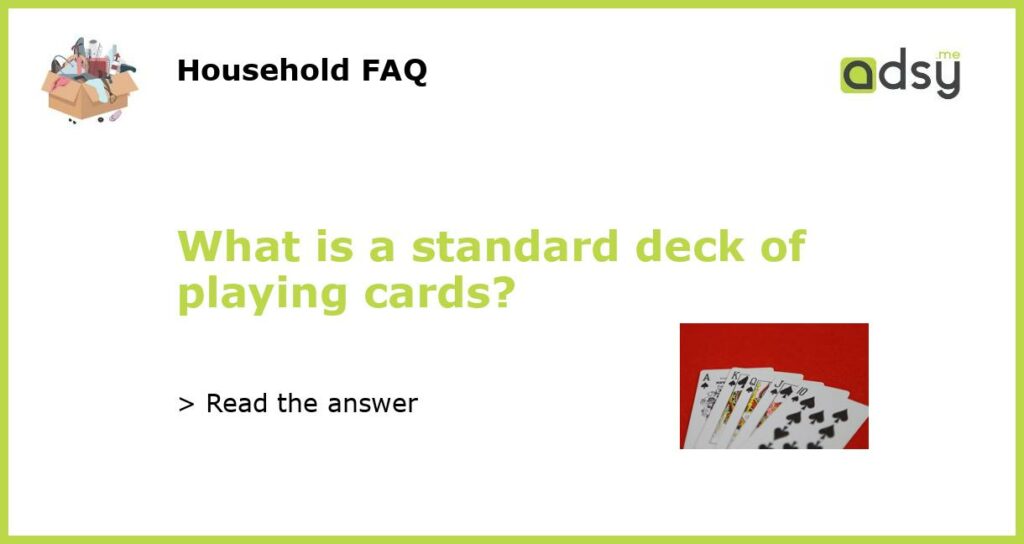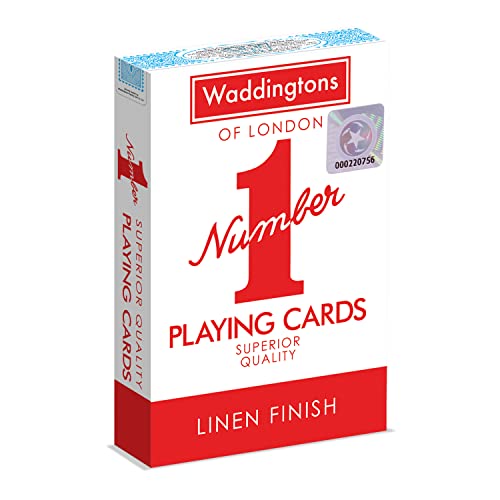What is a standard deck of playing cards?
A standard deck of playing cards is a set of 52 cards, typically used for playing a variety of card games. It is divided into four suits: hearts, diamonds, clubs, and spades. Each suit contains thirteen cards: Ace, 2, 3, 4, 5, 6, 7, 8, 9, 10, Jack, Queen, and King. The deck also includes two Jokers, which are often used as wild cards in certain games.
The history of playing cards
Playing cards have a long and interesting history that can be traced back to ancient China. The early versions of playing cards were believed to have been invented during the Tang Dynasty in the 9th century. They were initially used for playing a trick-taking game called “leaf game” and were made out of paper. The concept of playing cards then spread to other parts of Asia and eventually reached Europe in the 14th century.
In Europe, the suits and designs of playing cards varied from country to country until the standardized French deck was established in the late 17th century. The French deck is the basis for the modern standard deck of playing cards used today. It consists of the four suits, each with thirteen ranks, as mentioned earlier.
The uses of a standard deck of playing cards
A standard deck of playing cards has a wide range of uses beyond just playing card games. Some popular uses include:
- Card Games: The most common use for a deck of playing cards is, of course, playing card games. From classics like Poker and Blackjack to family-friendly games like Go Fish and Crazy Eights, there are countless games that can be played with a standard deck.
- Magic Tricks: Many magicians use playing cards in their performances to create illusions and amaze their audiences. Sleight of hand, card manipulation, and card tricks are all common in the world of magic.
- Cardistry: Cardistry is the art of manipulating playing cards to create visually stunning displays of skill and dexterity. It involves techniques such as shuffling, cutting, and flourishing the cards in unique ways.
- Educational Purposes: Playing cards can be used as a teaching tool for various subjects. They can be used to teach math concepts, probability, and even foreign languages through games and activities.
- Collectibles: Some people collect playing cards as a hobby. There are many unique and artistic decks available on the market, featuring different themes, designs, and special editions. Collecting playing cards has become a popular pastime for enthusiasts around the world.
Where to buy a standard deck of playing cards
A standard deck of playing cards can be easily purchased from a variety of sources:
- Local Retailers: Many convenience stores, supermarkets, and game stores carry standard decks of playing cards. They are often located in the toy or games section of the store.
- Online Retailers: Online marketplaces such as Amazon, eBay, and Walmart offer a wide selection of decks to choose from. You can browse through different designs, brands, and prices to find the perfect deck for your needs.
- Specialty Stores: Some specialty stores focus specifically on playing cards and card games. They may have a larger selection and carry unique and collectible decks that may not be available elsewhere.
- Custom Printing: If you’re looking for personalized or customized playing cards, there are websites that offer custom printing services. You can design your own deck with unique images, graphics, or text.
- Secondhand Stores: You may also find standard decks of playing cards at thrift stores or secondhand shops. These decks may be used or older, but they can still be used for playing card games.
Caring for your deck of playing cards
To ensure the longevity and usability of a standard deck of playing cards, it’s essential to take proper care of them:
- Store them properly: When not in use, keep your deck of cards in a protective case or box to prevent them from getting damaged or bent.
- Avoid moisture: Excessive moisture can cause the cards to warp or stick together. Keep them away from water or humid environments.
- Avoid extreme temperatures: Extreme temperatures can also damage the cards. Avoid storing them in hot or cold areas.
- Handle them with care: When handling the cards, avoid bending or creasing them. Use gentle shuffling and avoid forcefully spreading or throwing them.
- Clean them if necessary: If the cards become dirty or sticky, you can gently wipe them with a soft cloth or use card cleaning solutions specifically designed for playing cards.






